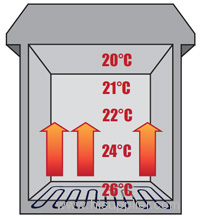You are here: home > nickel chrome copper iron alloys news > Electric thermal storage
Product (738)
- Pure Nickel Products (38)
- Incoloy Products (74)
- Inconel Products (72)
-
FeCrAl Product
(99)

-
Nichrome Products
(68)

- Monel Products (36)
- Hastelloy Products (49)
- Nickel Iron Alloy Product (59)
-
Nickel Copper alloys
(47)

- Nonferrous Metal Product (27)
-
Resistance Wire
(90)

- Stainless Steel Product (42)
- Mesh Demister (20)
- Others (17)
Product Forms (14)
Quality Certificate (11)
Learning Gallery (30)
Incoloy News (9)
Inconel News (22)
Molybdenum News (7)
Nikrothal News (4)
Nichrome News (13)
Titanium News (2)
Nickel News (8)
Alloys House (30)
Tools (27)
Nickel alloy News (30)
Latest Buzz (30)
nickel chrome copper iron alloys news (28)
Credit Report
Products Index
Company Info
Heanjia Super-metals Co., Ltd. [China (Mainland)]
Business Type:Manufacturer, Trading Company
City: Beijing
Province/State: Beijing
Country/Region: China (Mainland)
nickel chrome copper iron alloys news
Electric thermal storage

Electric thermal storage
Some electric utilities structure their rates in a way similar to telephone companies and charge more for electricity during the day and less at night. They do this in an attempt to reduce their "peak" demand.
If you are a customer of such a utility, you may be able to benefit from a heating system that stores electric heat during nighttime hours when rates are lower. This is called an electric thermal storage heater, and while it does not save energy, it can save you money because you can take advantage of these lower rates.
The most common type of electric thermal storage heater is a resistance heater with elements encased in heat-storing ceramic. Central furnaces incorporating ceramic block are also available, although they are not as common as room heaters. Storing electrically heated hot water in an insulated storage tank is another thermal storage option.
Some storage systems attempt to use the ground underneath homes for thermal storage of heat from electric resistance cables. However, this requires painstaking installation of insulation underneath concrete slabs and all around the heating elements to minimize major heat losses to the earth. Ground storage also makes it difficult for thermostats to control indoor temperatures.
Any type of energy storage systems suffers some energy loss. If you intend to pursue an electric thermal storage system, it would be best for the system to be located within the conditioned space of your home, so that any heat lost from the system actually heats your home, rather than escaping to the outdoors. It would also be best to know how quickly heat will escape from the system. A system that leaks too much heat could cause control problems, such as the accidental overheating of your home.
Pre Page:
Temperature sensor
Next Page:
Electric baseboard heaters



